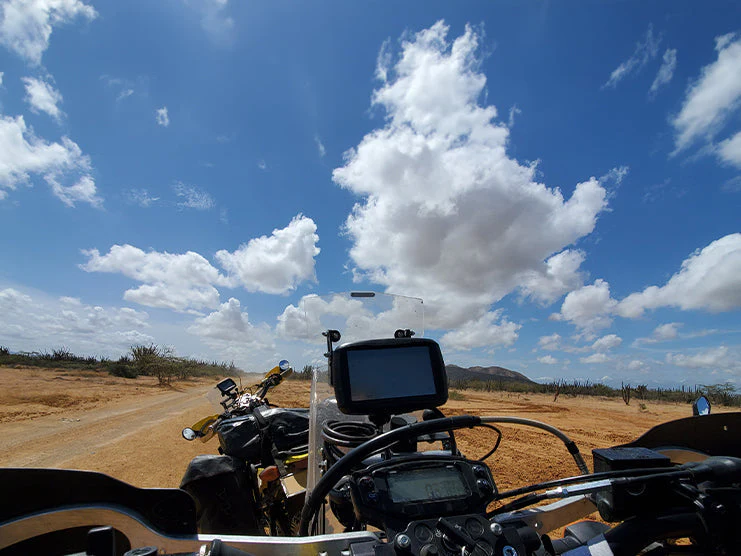Table of Content
Although riding a motorcycle is fun, it can be risky if you do not comply with traffic laws. Motorcycle riding has often resulted in accidents or even death due to the lack of safety features that other automobiles have. Taking steps to lower the risk of motorbike accidents is crucial to road safety. Luckily, there are many ways to do so. Read this article to learn how to reduce the risk of motorbike injuries.
1. Wear a Safety Helmet
Your head is the most crucial part of your body to protect. Many serious head injuries, including brain damage, often result in death or paralysis. To prevent severe head injuries, you must wear a good-quality helmet approved by the Department of Transportation (DOT).
2. Take Riding Lessons
Enrolling in a motorcycle riding school can help you learn how to ride a motorbike properly. These motorbike training facilities are staffed by experienced instructors who can teach you riding skills and safety tips.
3. Pick a Motorbike That Suits Your Needs
If you are a novice or intermediate rider, you should ride a lightweight and less powerful bike. Try to select a motorbike appropriate to your skills and expertise. Choose a motorbike that is easy to ride and control.
4. Do Not Ignore Road Signs
Sign along the sides of the road alert drivers of any speed limits, hazards, etc. Paying attention to these road signs is crucial to avoid getting involved in a motorbike crash.
5. Maintain the Brakes
Brakes help to slow down or stop your motorbike. Brakes can fail due to being worn down by constant use. Having non-responsive brakes when traveling at high speed can be life-threatening. Always take time to check the brakes before going for a ride. Also, regularly check the brake fluid level to ensure safety.
Also Read: 10 MOST COMMON MOTORCYCLE ACCIDENT INJURIES
6. Use Side Mirrors and Turn Signals When Required
Many motorbike accidents occur due to riders trying to overtake other vehicles without signaling them first. Use turn signals to indicate to nearby riders when you are changing lanes. Use side mirrors to watch for any vehicles coming up from behind. use the horn to alert other vehicles if they are about to collide with you.
7. Always Wear Protective Gear While Riding
In the event of an accident, safety equipment protects the entire body from serious injuries. If you are new to motorcycle riding, you should also wear knee and elbow pads to prevent joint injuries. Before you go on a ride, make sure you wear protective riding gear, including gloves, motorcycle boots, leather jacket, pants, and most importantly a good-quality helmet.
8. Avoid Riding under the Influence of Alcohol
Alcohol is one of the leading causes of car accidents and injuries in the United States. A drunk rider is unconscious and unable to react swiftly to sudden threats while riding. A rider’s blood alcohol concentration (BAC) must be below 0.08% for safe riding and traffic violations.
9. Maintain a Safe Distance from Vehicles in the Lane
Try to slow down in compliance with safety measures and be sure to maintain a safe distance with the vehicle in front as most motorcycle accidents and injuries are caused by speeding and emergency braking.
10. Keep Your Motorcycle in Good Condition
Maintain your motorbike by following regular service intervals to prevent breakdowns during the ride. Sudden breakdowns during the ride can be life-threatening and can cause motorcycle accidents and injuries.
Unexpected engine failure and flat tires may be dangerous for riders, especially while riding at excessive speed.
11. Stay Focused
If you are stressed for a personal or professional reason, do not go for a rude where you may be distracted, which could lead to a motorcycle accident and injuries. Also, ride carefully and stay focused while riding. Make sure you have a clear view of the road.
12. Carry Useful Stuff
Make sure to install luggage bags on your motorcycle, such as saddlebags, tank bags, tool bags, trunk bags, and sissy bar bags, to carry useful stuff like extra gloves, white visors for riding in the dark, and a raincoat in case it rains.
13. Install Wind Protection
A fairing and a windscreen can help block the oncoming wind. Fairings are durable attachments that reduce the impact if the front of your motorcycle collides with anything. Installing a tall windshield can keep wind and dust from entering your eyes.
14. Last Words
You can avoid motorcycle accidents and injuries by wearing quality helmets and proper protective equipment, riding slowly and carefully, maintaining your bicycle, and following road laws. Think about what type of motorcycle would be easiest for you to control. If you are a beginner, choose a bike that is lightweight and easy to use. Enrolling in a motorcycle safety school can also help you become an expert rider. By following the tips in this article, you can reduce the risks of motorcycle injuries and be safe on the road.













Leave a comment
All comments are moderated before being published.
This site is protected by hCaptcha and the hCaptcha Privacy Policy and Terms of Service apply.